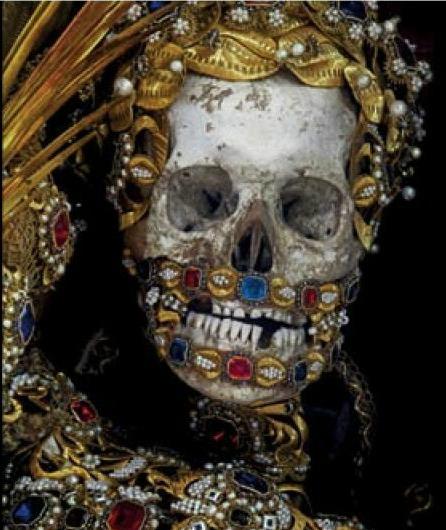An art historian hailed as ‘Indiana Bones’ has cast light on centuries-old jewel-encrusted skeletons held in churches across Europe in his book ‘Heavenly Bodies: Cult Treasures and Spectacular Saints from the Catacombs’.
A labyrinth of underground tombs containing what were thought to be the skeletons of thousands of early Christian martyrs was discovered in 1578. Known as “the catacomb saints”, the remains were shipped to religious houses and churches in northern Europe to replace relics destroyed during the Protestant Reformation.
Over two centuries, the skeletons were reassembled then dressed in crowns, wigs, and opulent costumes of silk and brocade. Many of them were adorned with jewellery made from gold, silver and gemstones including emeralds, rubies and pearls. Packed with macabre photographs, ‘Heavenly Bodies’ is a visual history of the veneration of the relics.
The author of ‘Heavenly Bodies’, Paul Koudounaris, gained unprecedented access to religious institutions throughout Europe to examine the relics, earning him his nickname. In his book, Koudounaris explains how the skeletons came to be regarded as holy relics and how the Catholic Church utilised them during the Counter Reformation to help revitalise faith. He also examines how later investigations into the skeletons’ provenance challenged their sacred status and how many were then hidden away. The book contains images of more than 70 of the skeletons in all their finery.









